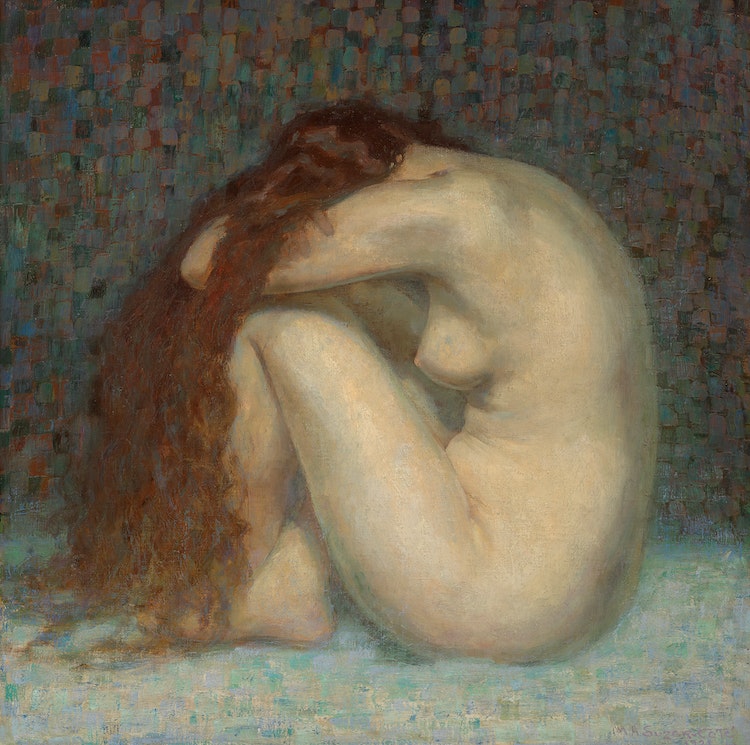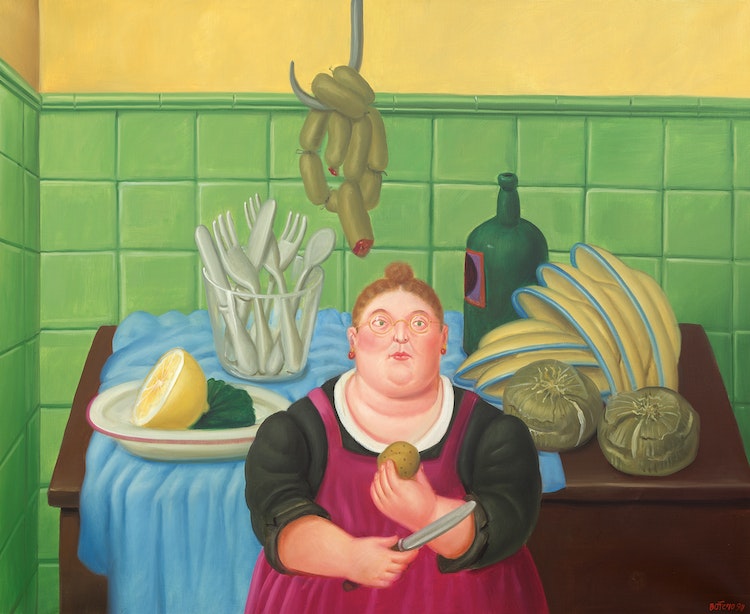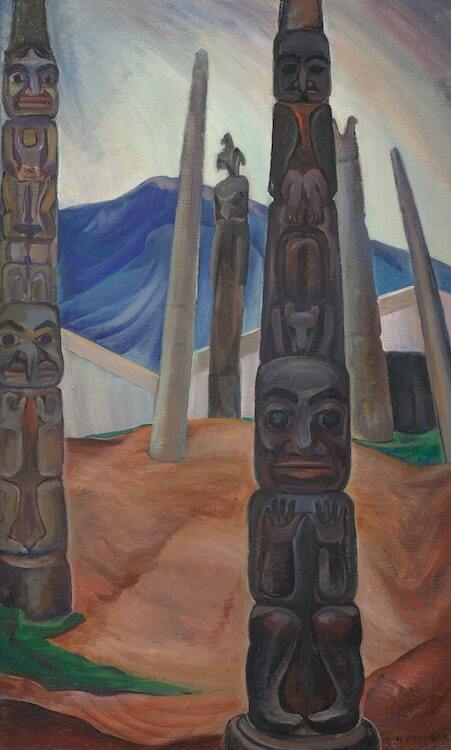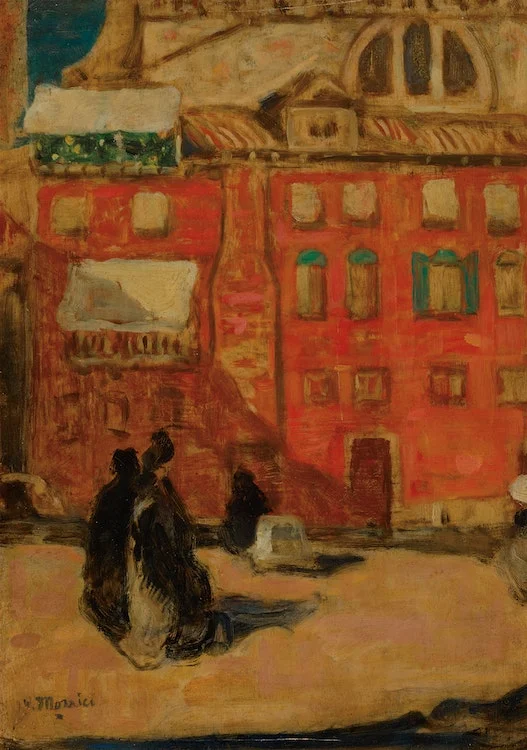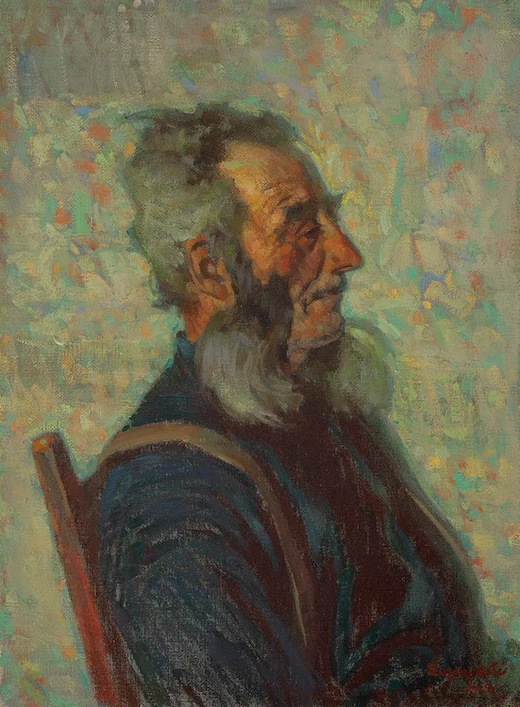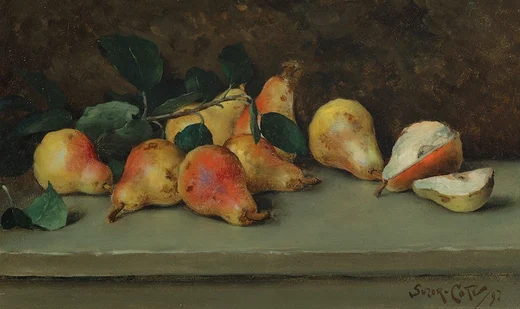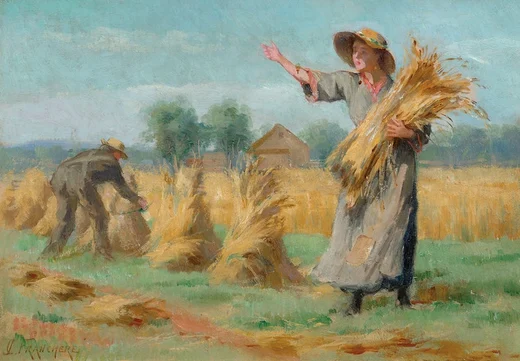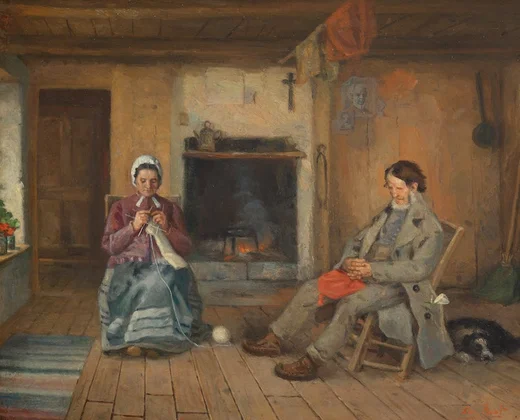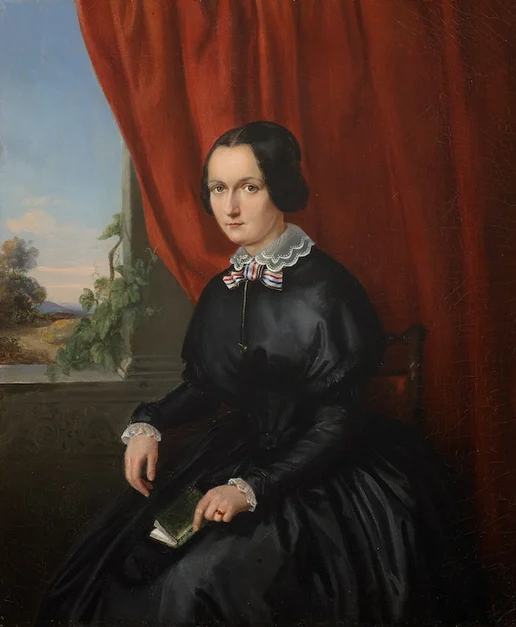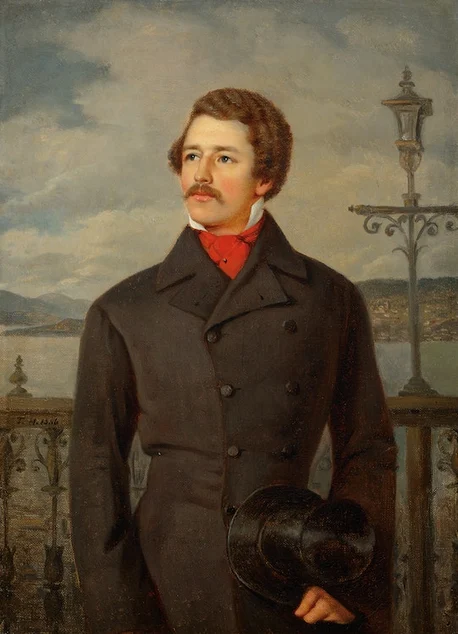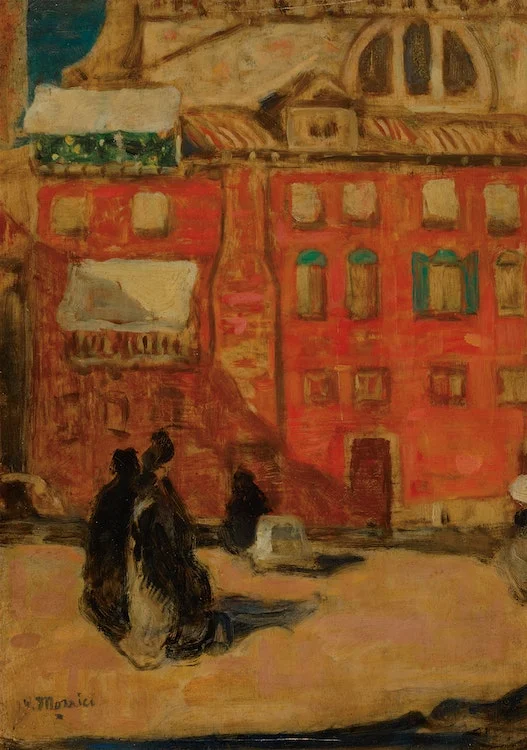Paul Peel spent much of the summer of 1887 in the French fishing port of Étaples-sur-mer, Pas-de-Calais, site of a colony of international artists. It was in Étaples that he found local girl, Marie, who became a favoured model for a series of figure paintings completed in 1888.
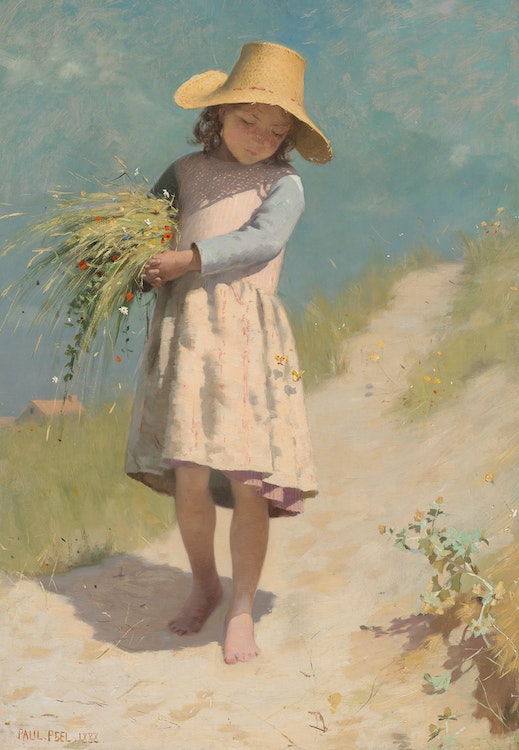
In this canvas, originally titled “The Young Gleaner”, the young girl is depicted outdoors under brilliant sunlight descending an Étaples sand dune, armed with freshly gleaned flowers and captured at the fleeting moment she spies two butterflies. This painting is a slightly larger replica of the canvas (Art Gallery of Ontario) shipped from Paul Peel’s Paris studio to Canada for exhibition: first at the 19th Annual Royal Canadian Academy of Art Exhibition in Ottawa in March 1889 and in April at the Art Association of Montreal Spring Salon. As was a common 19th century practice, Peel frequently replicated his paintings, sometimes in differing scales, for various reasons: additional sales; the artist’s own study/demonstration purposes; or as gifts to family or friends. This version of “The Young Gleaner” was retained by the artist’s Copenhangen-based Danish in-laws, the Verdiers, from whence it descended through the family until its sale in Canada. A third version of the subject is thought to be in private hands.
A primary painterly interest in “The Young Gleaner” is an optically realistic rendering of bright sunlight, an interest shared by most contemporary artists of the day. Peel’s preoccupation with sunlight is underscored by a companion piece, “The Young Botanist”, which depicts little Marie seated examining flowers on the same sand dune under a similarly bleaching sunlight (at least two versions of this composition are known, one in Museum London). A life-sized pastel drawing of “The Young Botanist” was exhibited at the Paris Salon of 1888, under the title “Au soleil” (Frank Gray, of Toronto, would purchase both the pastel (Sunshine) and oil from the artist at Oliver, Coate & Co, Paul Peel Sale in 1890).
Like fellow graduates of the Pennsylvania Academy of Arts and students of Thomas Eakins (Peel graduated in 1880), Paul subscribed to a tonal method of rendering natural light outdoors. This alternative aesthetic of light to French impressionism, practised by most North American artists‒recently coined the Glare aesthetic (William Gerdts, American Impressionism, 1980)‒depends on tonal, rather than colour, contrasts. Here the effort to render bright natural light conditions leads to a bleached palette and flattened forms with reinforced formal outlines (vs impressionist dissolution of form). This method owes a debt to Edouard Manet (whose 1884 Paris retrospective exhibition Peel must have seen).
Peel launched his professional career in France with such studio productions as “The Spinner” (1882, Museé des beaux-art de Montreal), and continued throughout his short career to seek his official credentials by means of idealized domestic genre paintings after the prevailing academic manner. It was at the recommendation of his first French teacher, Jean-Paul Gerome, that the fledging artist began sketching outdoors, first in Pont-Aven, Brittany, where he joined an established seasonal colony of largely American artists. Direct painting outdoors resulted in a number of high-keyed paintings capturing the bright, glaring properties of sunlight on local forms, exemplified by a series of Pont-Aven village views and the small figure study “Bubble Boy” (1884, Art Gallery of Ontario). In 1883, during a visit to his hometown of London, Ontario, Peel applied his new methodology to depict Covent Garden Market (Museum London), under a blazing sun using large, bright planes next to small areas of deep darks to solidify architectural forms.
Like his American friends, Peel’s concern with optical realism (photographs served as memory aids) was tempered by an ongoing academic concern for formal integrity and for appealing pictorial narratives. The bright illumination of little Marie equally evokes a happy mood and carefreeness of a fleeting moment of childhood, one echoing the artist’s personal life in 1887 as a new husband and father of a one-year old son (born the previous October in Étaples). The charm of children would remain a primary selling point of the artist’s production.
We extend our thanks to Victoria Baker, Canadian art historian and author of “Paul Peel: A Retrospective, 1860-1892” for contributing the preceding essay.



